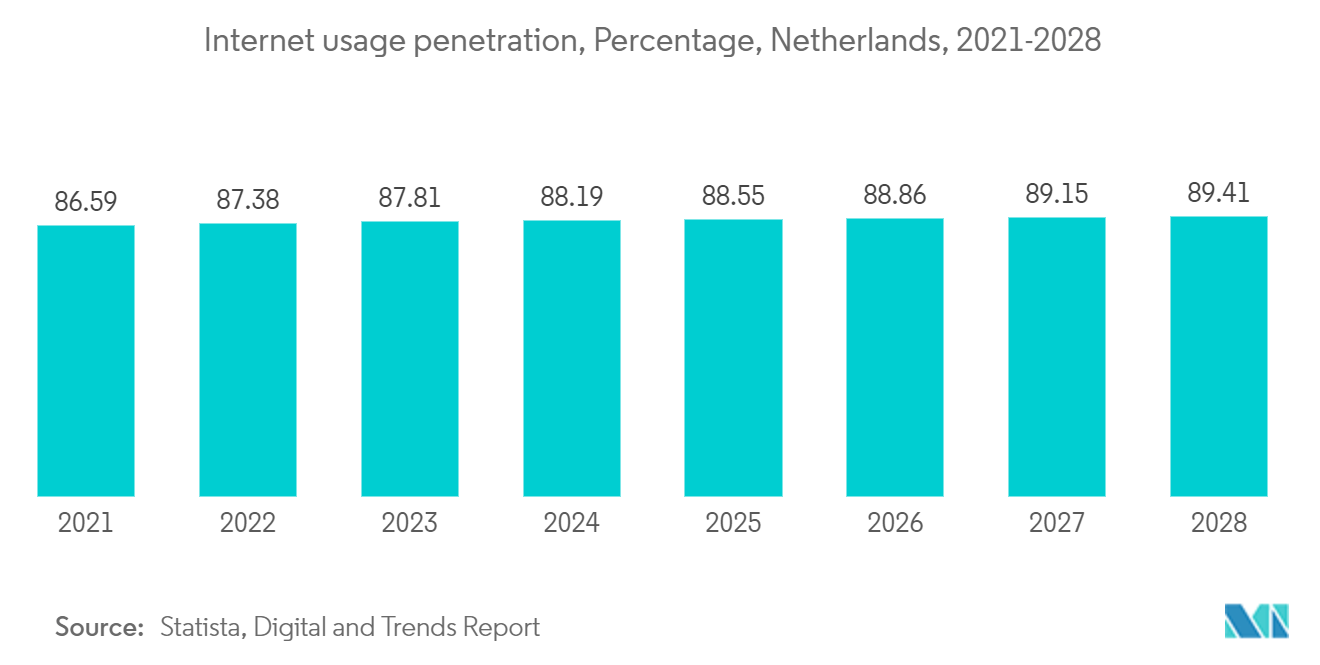Market Trends of Netherlands Data Center Power Industry
The IT & Telecom Segment is Expected to Hold a Significant Market Share
- The increased adoption of cloud computing services in the country has increased the number of IT infrastructure components. Many technology companies have launched cloud services to support the digital transformation efforts of many enterprises. Moreover, the increased adoption of e-commerce services has facilitated digitization. Such instances are increasing the demand for the data center power market during the forecast period.
- The data center market is achieving new records due to the increasing penetration of connected devices, including consolidation and the emergence of new players. Such cases will have a positive impact on market growth.
- The number of servers in data centers is likely to increase due to the growing demand for these digital services and the adoption of digital connectivity by end users, which requires more data storage. This situation corresponds to increased demand for data centers. Increasing data centers necessitates increasing the use of systems for power facilitation.
- The adoption rate of smartphones has been rising as more than half of Dutch adults use some form of social media, and nearly 90% of them use the internet. The two social networking sites, LinkedIn and Twitter, have the highest internet penetration rates in the Netherlands. This indicates that the demand for data centers is increasing.
- The number of 5G mobile connections has increased significantly, which means that the penetration rate of 5G mobile in the country is high. Increased data traffic will further increase the demand for DC facilities, boosting the growth of the market.

PDUs are Expected to Hold a Significant Share in the Market
- The growing focus on digitization, internet penetration, and e-commerce across the country has created a need for storage capacity, resulting in huge demand for data centers and increased power consumption. The growing need for data storage is leading to the adoption of intelligent power distribution units (PDUs) to optimize power consumption in data centers rather than simple multi-socket rack installations and servers and networking devices.
- PDUs are essential components of data center and server room infrastructure, allowing real-time monitoring of power consumption, voltage, current, and other electrical parameters. This data allows administrators to make informed decisions about power allocation and capacity planning.
- By tracking power consumption trends, managers can plan for future growth and avoid exceeding power capacity, preventing overloads that can lead to equipment failure. It also helps identify inefficiencies and optimize energy consumption. This eliminates unnecessary power consumption, lowers costs, and reduces your environmental footprint. Additionally, administrators can access and control it remotely, reducing the need for physical presence and minimizing disruption to operations.
- Industrial end users are gravitating toward cloud platforms such as Microsoft Azure, Google Cloud, and AWS. Growth trends indicate rapid adoption of cloud-based applications by end users. This opens the opportunity for intelligent and compact PDUs that can meet the increasing power requirements to operate such platforms.
- With the growth of massive data centers in the country, the need for PDUs is also increasing. Faster internet speeds and the associated proliferation of accessible devices play an important role in determining and estimating national data consumption. The number of 5G mobile connections has increased significantly, which means that the penetration rate of 5G mobile in the country is high. An increase in data traffic will further increase the demand for DC facilities with intelligent PDU systems.


